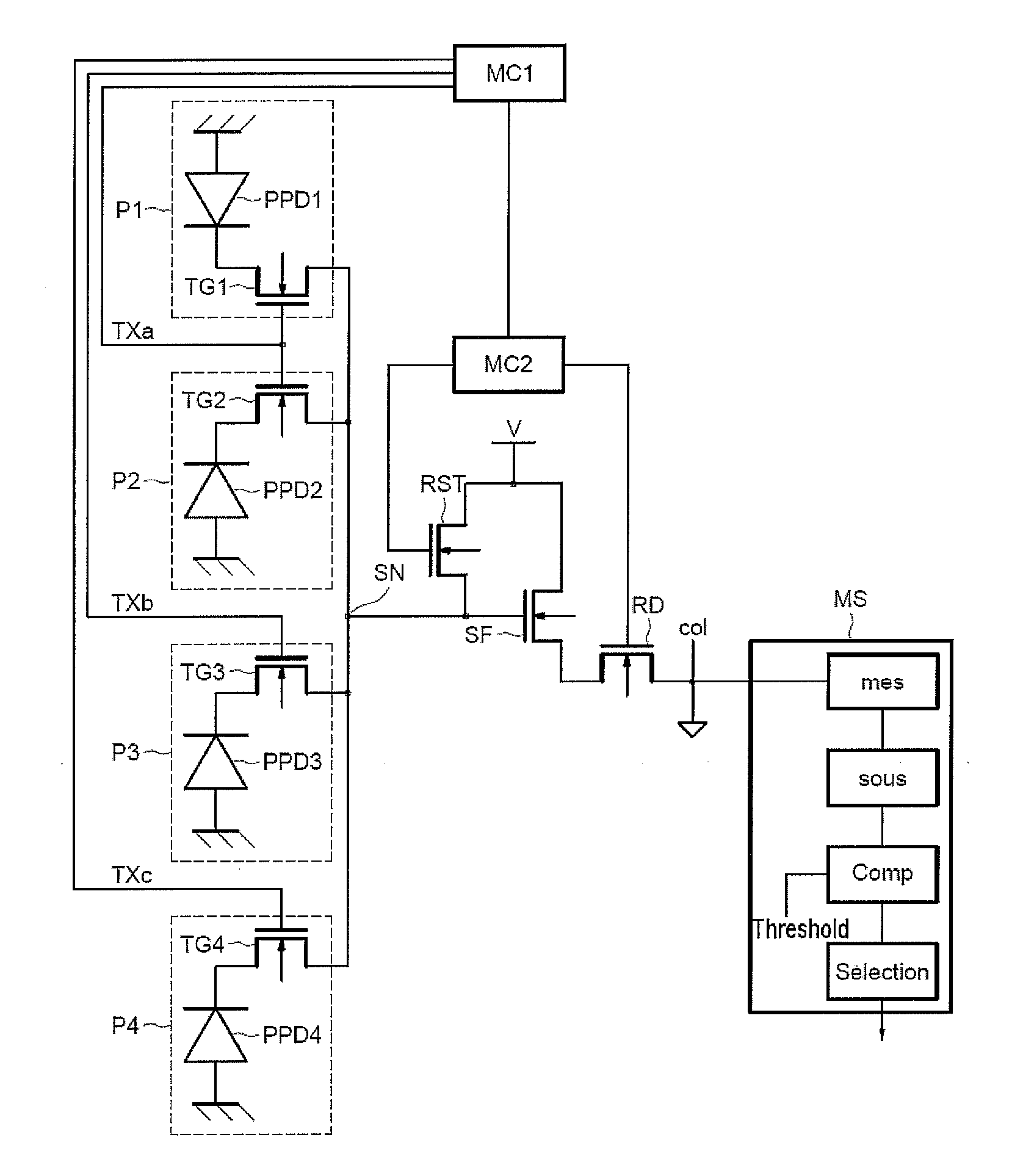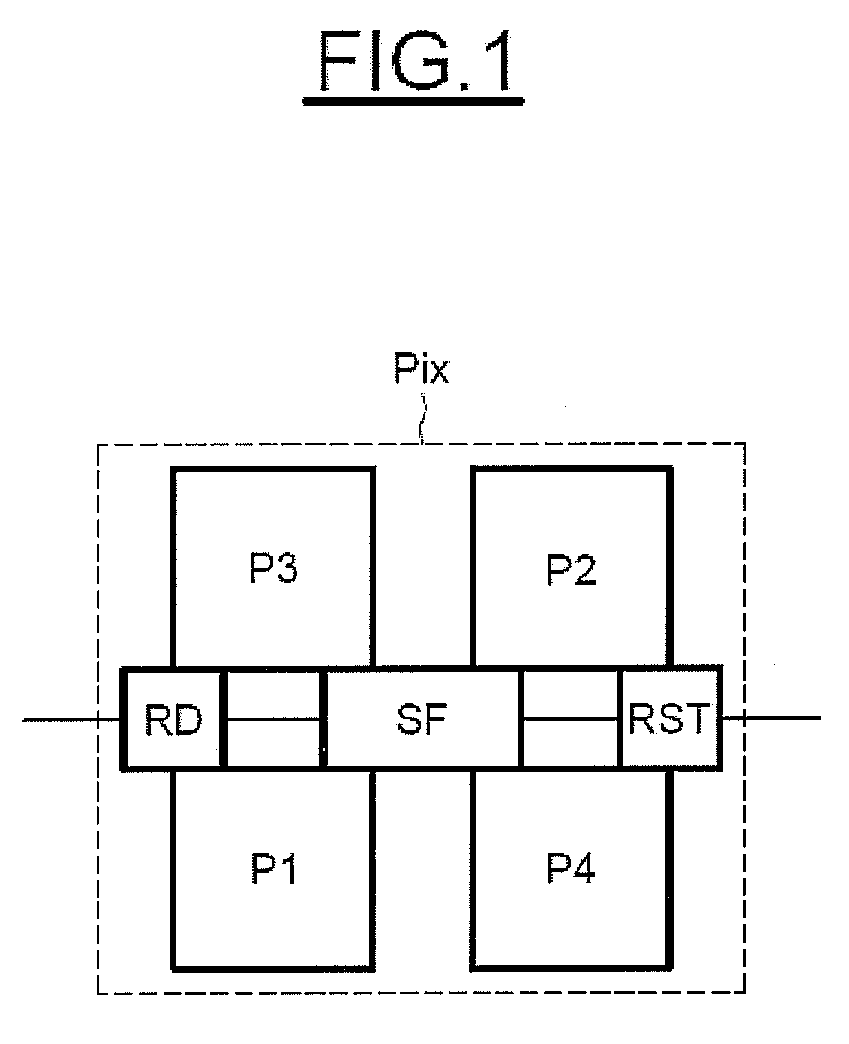Matrix imaging device comprising at least one set of photosites with multiple integration times
a technology of matrix imaging and photosites, which is applied in the direction of radio frequency controlled devices, instruments, television systems, etc., can solve the problems of reducing the definition, increasing the size of pixels, and saturated photosites of imaging devices, so as to narrow the light sensitivity range of imaging devices
- Summary
- Abstract
- Description
- Claims
- Application Information
AI Technical Summary
Benefits of technology
Problems solved by technology
Method used
Image
Examples
first embodiment
[0042]FIG. 3 illustrates an example of a method for controlling a pixel as illustrated in FIGS. 1 and 2 according to a In a first step 301, the photodiodes PPD1 and PPD2 of the first and second photosites P1 and P2 are reset. In order to reset the photodiodes PPD1 and PPD2, the second controller MC2 imposes an off-state potential, for example, 0, on the gate of the reset transistor RST as illustrated in FIG. 4 showing a timing diagram of the method. The first controller MC1 then imposes an on-state potential, for example, 1, on the gates of the charge-transfer transistors TG1 and TG2 respectively associated with the photodiodes PPD1 and PPD2 via the integration control signal TX1 for a short time so as to transfer the charges accumulated in the photodiodes P1 and P2 to the read node SN. Once the charge-transfer transistors TG1 and TG2 are again off-state, the second controller MC2 imposes an on-state potential, for example, 1, on the gate of the reset transistor RST so as to discha...
second embodiment
[0050]FIG. 5 illustrates an example of a method for controlling a pixel as illustrated in FIGS. 1 and 2 according to a The steps 501 to 507 are identical to the steps 301 to 307. Thus, in a first step 501, the photodiodes PPD1 and PPD2 of the first and second photosites P1 and P2 are reset. After step 502, photogenerated charges are accumulated in the photodiodes PPD1 and PPD2 of the first photosite and of the second photosite P1 and P2 coupled together during a first period. Then, in a step 503, the photodiode PPD3 of the third photosite P3 is reset before accumulating, in a step 504, photogenerated charges in the photodiode PPD3 of the third photosite P3 during a second period shorter than the first period. In a step 505, the photodiode PPD4 of the fourth photosite P4 is reset before accumulating, in a step 506, photogenerated charges in the photodiode of the fourth photosite P4 during a third period shorter than the second period.
[0051]In a next step 507, the read transistor RD ...
PUM
 Login to View More
Login to View More Abstract
Description
Claims
Application Information
 Login to View More
Login to View More - R&D
- Intellectual Property
- Life Sciences
- Materials
- Tech Scout
- Unparalleled Data Quality
- Higher Quality Content
- 60% Fewer Hallucinations
Browse by: Latest US Patents, China's latest patents, Technical Efficacy Thesaurus, Application Domain, Technology Topic, Popular Technical Reports.
© 2025 PatSnap. All rights reserved.Legal|Privacy policy|Modern Slavery Act Transparency Statement|Sitemap|About US| Contact US: help@patsnap.com



